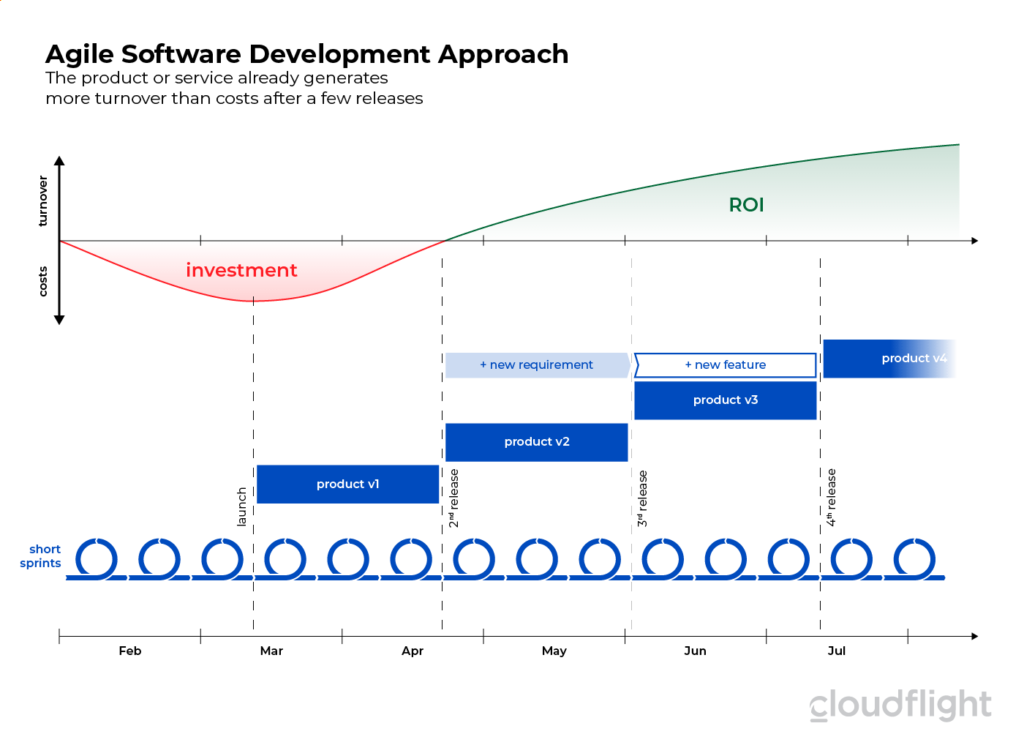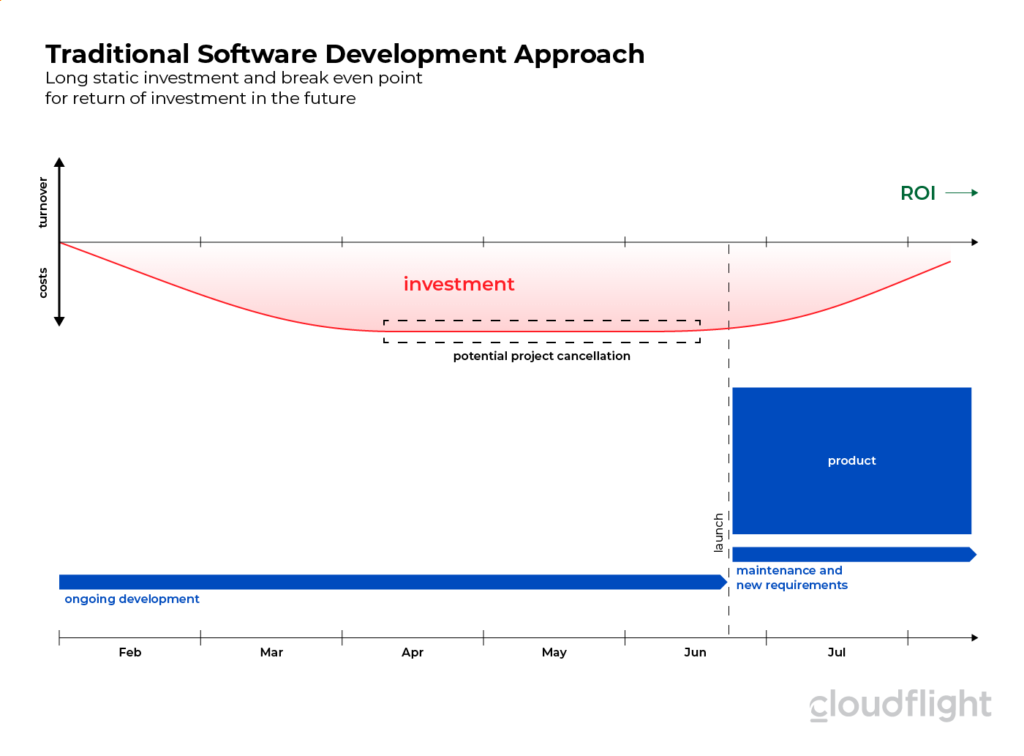It’s not always about what you do, but how
Despite how multifaceted digitalization can often be for companies, in the end it is mostly about being financially successful. Digital innovations can make the world a better place, ensure more justice, create new opportunities for people – but it is business standards that are ultimately used to evaluate the success of digitalization.
Every decision-maker who attaches merely other reasons to this context has either enough money, a very innovative and altruistic world outlook or isn’t probably telling the whole truth.
Everyone has heard at least once the pair of questions “How much does it cost? And how much money will it generate in the future?”
These questions apply especially to very competitive markets like the manufacturing industry. Automation, sinking production costs due to global competition, and the rising price of raw materials mean that the overall financial pressure to succeed in digitalization is often even greater. This applies from global corporations to hidden champions!
Innovation, automation, digitalization – but how?
As a result, an entire sector is still caught in the persistent digitalization fever. Although many have already executed on their first projects, they are still faced with the ever-increasing intensity and the new possibilities of digitalization. For many companies, at the moment the main task is regaining control, celebrating successes yourself, and possibly even being the first in their peer group to create a differentiating factor through digitalization.
But how do companies get there?
Some say that it is the right strategy that counts: the ones with a clear plan are those who will draw from their experience and make the right decisions at an early stage, thus generating long-term benefits. But is it always possible to plan everything in the digitalization process?
Others say that technologies are the decisive factor. Cloud services, new software, machine learning IoT devices, and many others are without a doubt promising, but they are also successful only when their implementation is successful and when they can constitute a differentiator.
However, some rely on the right use cases. Success probabilities are at their highest in those areas where customers, partners, or even employees feel the most pain and improvement is necessary.
And all areas will certainly provide an exorbitant contribution to success, but they are often beaten by the right organization and implementation culture. This is where the Agile paradigm comes into play.
Agile is about much more than the systematic application of Scrum in software development or the implementation of new ways of working in 2-week sprints.
Should companies follow an agile approach, they would be able to react much better to changes, develop their ideas and projects consistently and put the user at the foreground of development. 
The advantages of agile projects in software development
If companies want nothing more than speed in the digitalization process without differentiating themselves from the market, the choice of standard software is still the best and most affordable.
However, when it comes to creating differentiating features through the digitalization of projects, agile approaches are superior in almost every aspect.
- Approving budget-related decisions: Getting a multi-million project with high uncertainty and late monetization approved through decisional boards requires plenty of trust and high persuasiveness. This will become almost impossible especially during rather risk-averse times. On the other hand, it would be much faster to get budget approval for a smaller project that is in the range of the 5-digits or of the lower 6-digits and that is manageable in terms of time.
- Incorporating experiences & being able to react: New insights will get involved during the project. New technologies, possible integrations in peripheral systems, or a new competitor in the market can always pop up. The more static is the planning of a project, the harder it is to react to these factors at a later point. Before causing here a debate about the so-called sunk costs, companies should learn to better avoid poor investments and to retain a lasting reaction capacity.
- Creativity & Reflection: Thanks to the regular review and refinement options in agile projects, companies, and users can quickly evaluate the implemented functions. This way, they stimulate their creative process by evaluating which processes can be additionally supported by digital solutions, such as if the software fits actual practices or whether the current direction is still the right one.
- The architecture of microservices: The new, digital and dynamic applications are in most cases built as microservice architecture. Even when there are some good reasons for monolithic architectures, which are sometimes even easier to maintain, the theory of loosely coupled microservices has become widely accepted. It has also arisen to the status of standard, for it brings flexible and successful applications to market. The more detailed and agile the organizational form, the easier it is for microservices to be orchestrated and connected by different teams.
- Bigger growth in the future: “Start small, win big!” Many applications take some time before they are finally accepted by users. If companies present them with the finished solution, which can be changed very little, they inevitably have to learn to love it. Agile and iterative solutions, on the other hand, can better take user feedback into account and, together with increasing growth, offer the right additions.
- Easier service provider management: In particular, larger, strategic digitalization projects are often implemented with external partners. One or more service providers are therefore directly responsible for the success. A company that has already won the multi-million dollar contract and has been able to firmly anchor itself in the project has certainly lost its reputation and has to fulfill its contractual obligation. Service providers who apply permanently with high ambitions for continued employment, on the other hand, have a vital interest in always fulfilling something beyond the requirements. In case of doubt, the control, management, and separation of the service providers are much easier in agile mode.
- Refinancing and self-financing of the project – early ROI wins the race: If there is an initial product launch, the so-called MVP (Minimum Viable Product), the users receive the first core functions of the later, large application. Companies can leverage their advantages directly by optimizing business processes or external sales. The positive cost balance ensures that the first income partially finances the further development of the project itself. In this way, companies can count on profits and therefore achieve the first goal of their digitalization efforts at an early stage.
Agile or not – that’s what matters in the end
Many companies try to find a common ground between their traditional values and agile methods. Having only connotations of agile is, however, usually a treacherous path that ends in chaos. If the individual project members are not sensitized to agile processes, they do not work well together. The expectations of such a project often do not match the iterative approach and the rule of small results. The market success of the applications can only be achieved with difficulty if an MVP variant is not successfully defined or the company cannot handle the first partial results correctly.
It is therefore important in practice to adapt your project as completely as possible to the values of agile methods. It is by no means about specifying an innovative and cooperative way of working to follow a trend, but rather about creating real financial added value. This is only possible when the implications of this implementation are taken seriously and there is support for the approach.
Ultimately, however, agile is not the panacea that turns every mediocre digitalization initiative into gold. Nevertheless, especially in digital competition, it is worth breaking out of traditional structures and using the new trends in cultural and organizational matters to ensure the financial success of projects!

